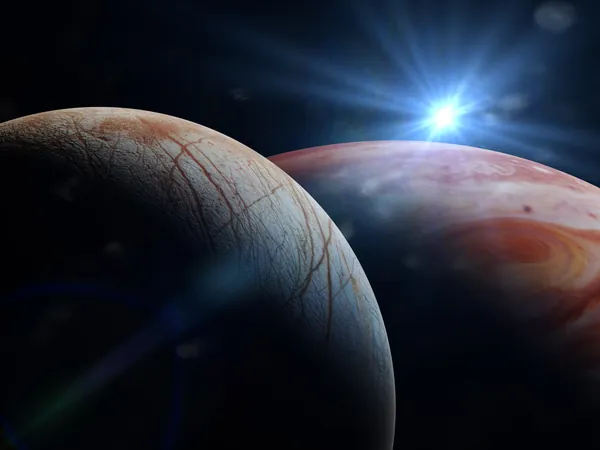
Unveiling Europa: Mysterious Changes Suggest a Hidden Ocean Beneath the Ice
2025-05-30
Author: Charlotte
A Glimpse Beneath the Ice
New revelations from the James Webb Space Telescope have thrown a spotlight on Europa, Jupiter's enigmatic icy moon, which appears to be undergoing constant transformation.
Chaos Regions: The Hot Spots of Activity
Particularly intriguing are what scientists call "chaos regions"—areas marked by twisted cracks and ridges where the surface features appear jumbled. Richard Cartwright, a geologist from Johns Hopkins University, suggests these features may be the result of deeper geological activity.
Crystallization Patterns Unraveled
"Our observations indicate that the ice on Europa is not only porous but also warm enough in certain locations to allow for rapid recrystallization," Cartwright explains. This dynamic crystallization hints at complex processes occurring beneath the moon's surface, enhancing the likelihood of a hidden liquid ocean.
Understanding Ice: More than Just Frozen Water
While we commonly refer to the ice on Europa as "water ice," it's crucial to differentiate it from other frozen substances, like carbon dioxide. Here on Earth, water ice has a hexagonal structure that makes it less dense than liquid water, allowing it to float. However, on Europa, the surface is consistently bombarded by charged particles, which disrupt this arrangement, producing what scientists call "amorphous ice."
Crystalline Ice: Evidence of an Underwater World
In a remarkable turn, researchers have found evidence of crystalline ice not just beneath Europa's surface but also in the Tara Regio region, known for its geological peculiarities. Cartwright emphasizes the significance of this finding, stating, "This area boasts the best evidence of sodium chloride—essentially table salt—likely originating from the moon's interior ocean." The region also shows unusual signs of carbon dioxide and hydrogen peroxide.
Hints of Geological Activity Below
These fractured surface materials suggest geological processes are at work, pushing materials from beneath. Physicist Ujjwal Raut, also part of the research team, notes, "Our data indicates a potential subsurface ocean nearly 20 miles deep. The presence of carbon dioxide on the surface strongly suggests it comes from a liquid source below."
The Exciting Journey Ahead
As evidence of Europa's liquid ocean mounts, scientists are increasingly excited about the potential for life beyond Earth. The mystery of this icy moon continues to unravel as research progresses, promising groundbreaking discoveries that could reshape our understanding of the cosmos.









 Brasil (PT)
Brasil (PT)
 Canada (EN)
Canada (EN)
 Chile (ES)
Chile (ES)
 Česko (CS)
Česko (CS)
 대한민국 (KO)
대한민국 (KO)
 España (ES)
España (ES)
 France (FR)
France (FR)
 Hong Kong (EN)
Hong Kong (EN)
 Italia (IT)
Italia (IT)
 日本 (JA)
日本 (JA)
 Magyarország (HU)
Magyarország (HU)
 Norge (NO)
Norge (NO)
 Polska (PL)
Polska (PL)
 Schweiz (DE)
Schweiz (DE)
 Singapore (EN)
Singapore (EN)
 Sverige (SV)
Sverige (SV)
 Suomi (FI)
Suomi (FI)
 Türkiye (TR)
Türkiye (TR)
 الإمارات العربية المتحدة (AR)
الإمارات العربية المتحدة (AR)